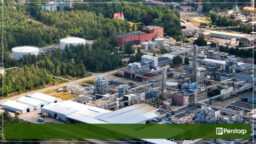Supply planning will never be the same
The recent volatility has exposed traditional planning approaches like MRP – highlighting their lack of agility. As supply chains remain in flux, companies urgently need planning solutions capable of keeping up.
What if you instantly knew the full business impact of late material? A machine breakdown? Or an added order? And what if, in a split second, your planning system immediately suggested the best way to address the situation?
This is what concurrent supply planning is all about.
Concurrent supply planning fundamentally changes how you manage the supply side of your business
It’s about connectivity and a holistic approach to supply planning where information is instantly available to all parties.
Instead of looking at procurement, production, distribution, and inventory in isolation, concurrent planning optimizes your supply chain as a whole. Speeding up your planning cycle and allowing your business to operate based on the latest information and with minimum disruption. It is the very basis for a resilient supply chain.
Here are my top five reasons you should start your concurrent planning journey as soon as possible.
1. It enables you to synchronize all supply functions and planning horizons
Planning methods like MRP, CRP, and DRP support individual supply chain functions but offer little help synchronizing them.
For example, an MRP-generated production plan may need to go through time-consuming capacity and raw material availability checks before release. By the time your production plan is ready, your procurement and distribution planners have already started their work based on incomplete information. This results in longer lead times and inventory and customer service issues.
Concurrent planning works from a single data set and ensures that all your supply chain functions and planning horizons remain synchronized. When consistency and transparency are guaranteed, communication between business areas is improved, and functional silos and duplicate data sources disappear. Instead, you can focus on what’s best for your company.
2. You get 100% visibility
A concurrent supply planning solution seamlessly integrates all your supply functions and planning horizons. As soon as something changes in one area, the impact is visible to all other areas. When stakeholders can follow a clear “cause and effect” relationship, they start to trust the system.
For example, if there’s a late incoming material, your planners can immediately see how it will impact your inventory, production, and ability to meet demand. Similarly, your weekly production plan links directly to your detailed production schedules. So, when you update on one horizon, it is visible on another.
Concurrent supply planning fundamentally changes how you manage the supply side of your business. It’s about connectivity and a holistic approach where information is instantly available to all parties.
3. It’s lightning fast
Dealing with volatility is notoriously tricky. Your response to changes in demand, material availability, and capacity has to be speedy, but you also need to maintain the balance between supply chain cost and customer service.
Sequential planning tools like MRP are slow. Creating a complete supply plan can take weeks, and dealing with changes is time-consuming. These delays reinforce functional silos and suboptimal decision-making.
With concurrent supply planning, you can optimize your entire supply chain in seconds and quickly respond to any exceptions. As a result, you can course correct your supply chain with little effort, maintaining supply and demand balance and operational efficiency even during the most volatile times.
4. You’ll minimize total cost of supply
A modern supply chain optimization solution provides the platform for your concurrent supply planning initiative.
The technology allows you to model all your supply chain costs, rules, and constraints. Specifically, with costs part of your model, the optimization engine can generate end-to-end supply plans that meet your requirements with minimum cost. Alternatively, if you add revenue information to the mix, the system will create a plan that maximizes profitability.
5. Boost your IBP process
A supply chain optimization solution is the perfect platform for effective Integrated Business Planning (IBP).
First, the solution optimizes your overall supply chain – the very aim of the IBP process. Also, everyone can see the connection between your supply chain functions and how a decision in one area impacts the rest of the chain. And because supply issues are highlighted well in advance, the appropriate team(s) can respond early and in a targeted way.
The modeling capabilities and the ability to generate optimized plans in seconds also mean that the system is ideal for simulations. You can run as many supply scenarios as you wish, evaluating the full commercial and operational impact before committing.
Concurrent supply planning – it’s a new mindset
By accepting that nothing is constant and that, therefore, the perfect plan doesn’t exist, you can start to build a more resilient supply chain.
Aim for a planning process that delivers optimized supply plans “here-and-now,” and can respond to change in near real-time.
To reinforce this new mindset, aligning your planning process, performance metrics, and KPIs with this new holistic approach is essential. The primary focus should be on your performance versus the optimized end-to-end supply plan – and not on the efficiency of individual functions.
The scope and potential of concurrent supply chain planning are nearly endless. Undoubtedly, AI, machine learning, and IoT technologies will play a significant role in the future, adding planning intelligence and further cutting response times. However, businesses should first ensure that the basics are in place. A modern supply chain planning solution combined with a fresh mindset is a good start.
Want to learn more about concurrent supply chain planning? Get in touch. We’d love to talk.
Get all the latest industry trends, updates & news from Optimity
















